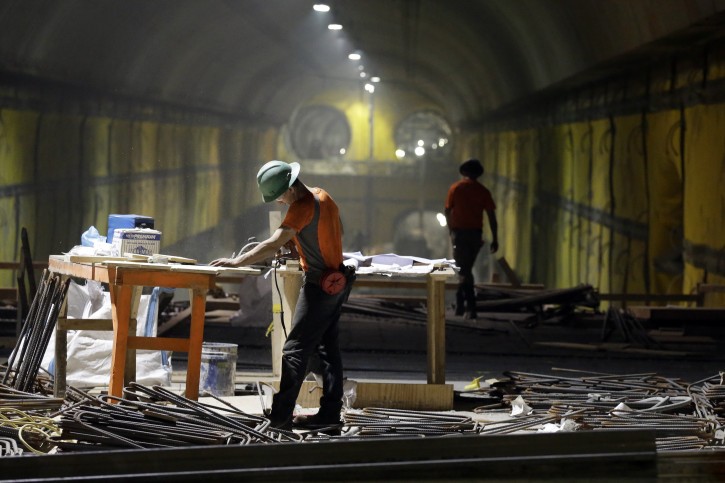
New York – A massive new commuter rail project below New York City’s Grand Central Terminal — one of the nation’s largest transportation upgrades — is slowly rolling forward, including a tunnel costing $1 million per foot, the chief engineer said Wednesday.
Once finished, the terminal will cover five city blocks and reach 14 stories deep under Grand Central, allowing Long Island Rail Road passengers to get off on Manhattan’s east side. For now, they must travel all the way to Penn Station on the west side.
The target completion date is 2022, when “I hope to be alive,” joked Michael Horodniceanu, 70, head of capital construction for the Metropolitan Transportation Authority.
He led reporters on a walking tour Wednesday showcasing progress in rough caverns and tunnels being filled in with floors, ceilings and walls, plus stairways and escalators up to Grand Central.
“We’re doing it under very strict rules of not disturbing the daily traffic of Long Island Rail Road, Amtrak and New Jersey Transit — trust me, not an easy thing to do,” Horodniceanu said, referring to other train services operating in the area that must cut power at carefully planned times for the work. “It’s a very tricky thing.”

The new terminal will bring an estimated 160,000 passengers daily — about half of LIRR’s projected riders — from the far end of Long Island through a new Queens station in the Sunnyside neighborhood linked to the 120-foot tunnel under Northern Boulevard. It will be part of a seven-mile network of new tunnels.
“One of the things we needed to do there is to freeze the ground,” Horodniceanu said, adding that only then could workers remove the dirt and build steel supports. “This was a very risky operation; we had to make sure it was done properly.”
The terminal under Grand Central will have four platforms serving eight tracks over two levels. Also being built is a gleaming, 350,000-square-foot retail and dining concourse.
It’s estimated to cost $10.2 billion — more than double what was originally planned — and take over a decade longer than anticipated. MTA officials say the delays were due to the challenge of securing funding while carting away millions of cubic yards of what Horodniceanu calls “muck” from blasting and boring through rock and mud.
MTA spokesman Aaron Donovan said some of the cost overruns involve the need to keep trains running while work is being done. “It’s like fixing your bicycle while you’re riding it,” he said.
The East Side Access, Horodniceanu said, is a “game changer” for commuters who now travel to Manhattan’s west side, saving them more than three hours a week in commuting time by erasing the need to backtrack from Penn Station via the city subway.
Last week, the MTA had to close a seating area in Grand Central’s dining concourse to accommodate construction of the structural framework for East Access stairways and escalators.
This latest work, taking more than one year, “will give New Yorkers their first real, tangible sense of what is to come,” said Horodniceanu.
As reported by Vos Iz Neias
